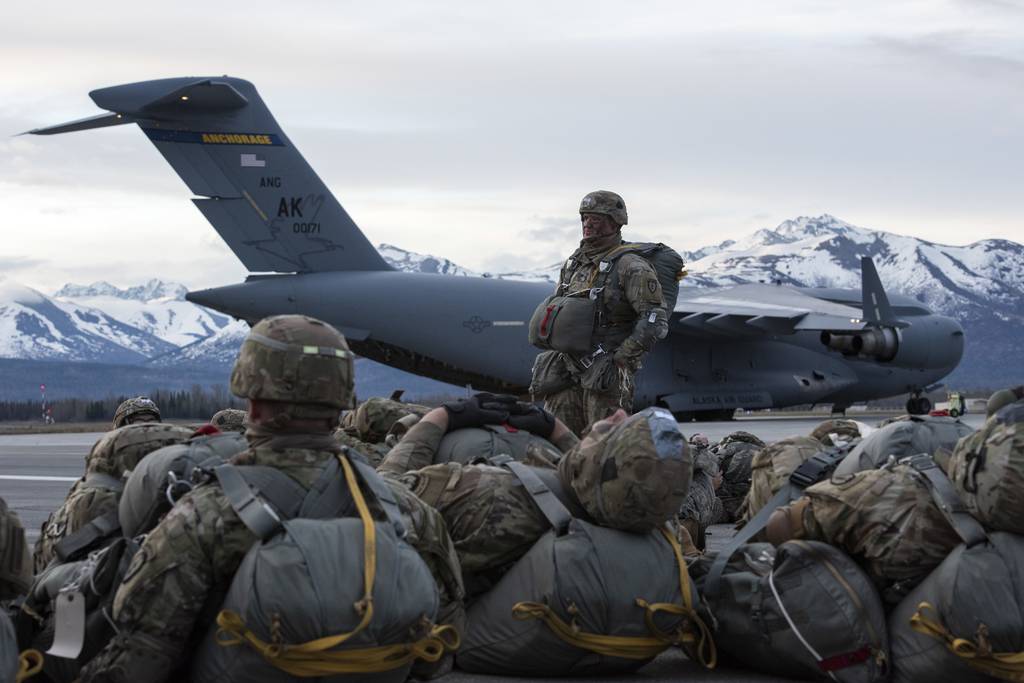NASHVILLE, Tenn. — Now entering its third year, the U.S. Army plans to bring more international partners into the Experimental Demonstration Gateway Exercise next month to improve the ability to connect, share information and execute missions together more seamlessly, according to the service’s two-star general in charge of aviation modernization.
“We have a much larger coalition presence,” Maj. Gen. Wally Rugen, the Army’s Future Vertical Lift Cross-Functional Team lead, told Defense News in an interview ahead of the Army Aviation Association of America’s summit in Tennessee.
Australia, Canada, France and the United Kingdom — all of which observed the exercise last year — are now participating, Rugen said. Those nations will join the Netherlands, Italy and Germany, which participated in the exercise in 2022 at Dugway Proving Ground, Utah.
“I don’t want to oversell it, but we have seven that are bringing technology, two that are observers, and we have actually others who have sent in some late requests, so that number may grow by the time May happens. It may be up to 10 with us,” he added. “We are working through the paperwork and foreign disclosure stuff, but that coalition piece is really good.”
With the addition of more partners, the Army will continue to work on its secret enclave that connects countries on the battlefield at a classified level not previously achieved. The coalition force plans to go through hundreds if not thousands of iterations of a machine-to-machine call for fire, while also testing message traffic, Rugen explained.
If the force at the Experimental Demonstration Gateway Exercise — otherwise known as Edge — can solve such a challenge “I’ll be very, very excited,” he said at a press briefing during the AAAA summit.
Edge will take place at Yuma Proving Ground, Arizona, in May, where events will challenge the U.S. Army and its growing number of partners as the service experiment with concepts and capabilities meant to enhance mission performance in the aerial tier.
The campaign applies space, aviation and network capabilities to show how the Army and the joint force would fight in various theaters. The 2021 iterance focused on the Indo-Pacific region.
The experimentation exercise is meant to feed into Project Convergence, a larger campaign of learning that examines and tests how the Army plans to fight against advanced adversaries across all domains of warfare using capability slated for fielding about 2030 and beyond. The next Project Convergence capstone event will take place in the spring of 2024.
Last year, Edge focused on the European theater and centered around a wet-gap crossing. The U.S. Army’s 82nd Airborne Division and other allied units were tasked with defeating an enemy’s integrated air defense systems. That led to a second phase, introducing maneuver forces through air assaults to seize two different pieces of terrain.
This year, the exercise will focus on the Indo-Pacific theater and will test capability across a vast expanse of territory by tying the Yuma-based exercise to Northern Edge, a joint military training event at Fort Wainwright, Alaska, down to Joint Base Lewis-McChord in Washington state. Two of the Army’s three established multidomain task force units will participate in the exercise. The other task force is European-based.
Participants will use more than 120 technologies at the exercise, an increase over previous years, Rugen said.
The Army will continue to experiment with what it calls “deep sensing” capabilities using aircraft, air-launched effects, unmanned aircraft, sensors, and command-and-control capabilities to see farther, communicate faster and penetrate enemy territory while keeping piloted aircraft out of the range of threats.
To achieve deep sensing on the battlefield, Rugen said, the Army is working to integrate technology developed in the Intelligence, Surveillance, and Reconnaissance Task Force and within Army Cyber Command.
Edge will also help the Army develop and refine its Ariel Tier Network. The Army Requirements Oversight Council will make a decision on the way forward for the capability this calendar year, Rugen noted.
Contested logistics will have a stronger focus in the exercise as well, Rugen said, given its increasing priority as the Army modernizes and prepares to operate in environments under constant surveillance or threat from fort to port.
With the introduction of new partners, some new capability in development with allies will also undergo testing. For instance, Rugen said, Canada is bringing an uncrewed rotorcraft to continue working on related concepts, and the Netherlands is bringing a fifth-generation fighter jet.
Jen Judson is an award-winning journalist covering land warfare for Defense News. She has also worked for Politico and Inside Defense. She holds a Master of Science degree in journalism from Boston University and a Bachelor of Arts degree from Kenyon College.








